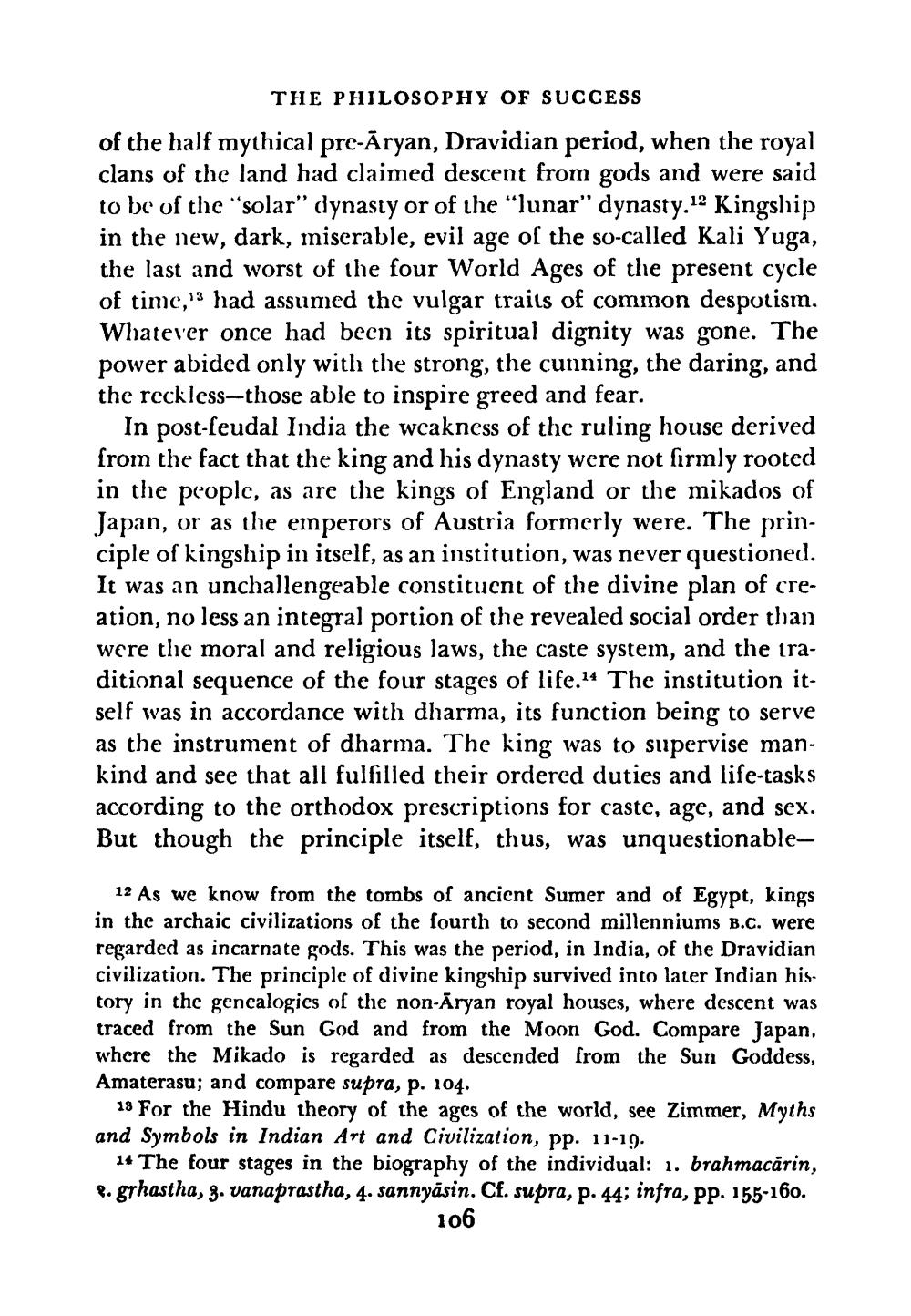________________
THE PHILOSOPHY OF SUCCESS of the half mythical pre-Aryan, Dravidian period, when the royal clans of the land had claimed descent from gods and were said to be of the solar” dynasty or of the “lunar” dynasty.12 Kingship in the new, dark, miserable, evil age of the so-called Kali Yuga, the last and worst of the four World Ages of the present cycle of time,13 had assumed the vulgar trails of common despotism. Whatever once had been its spiritual dignity was gone. The power abided only with the strong, the cunning, the daring, and the reckless-those able to inspire greed and fear.
In post-feudal India the weakness of the ruling house derived from the fact that the king and his dynasty were not firmly rooted in the people, as are the kings of England or the mikados of Japan, or as the emperors of Austria formerly were. The principle of kingship in itself, as an institution, was never questioned. It was an unchallengeable constituent of the divine plan of creation, no less an integral portion of the revealed social order than were the moral and religious laws, the caste system, and the traditional sequence of the four stages of life.14 The institution itself was in accordance with dharma, its function being to serve as the instrument of dharma. The king was to supervise mankind and see that all fulfilled their ordered duties and life-tasks according to the orthodox prescriptions for caste, age, and sex. But though the principle itself, thus, was unquestionable
12 As we know from the tombs of ancient Sumer and of Egypt, kings in the archaic civilizations of the fourth to second millenniums B.C. were regarded as incarnate gods. This was the period, in India, of the Dravidian civilization. The principle of divine kingship survived into later Indian his tory in the genealogies of the non-Aryan royal houses, where descent was traced from the Sun God and from the Moon God. Compare Japan, where the Mikado is regarded as descended from the Sun Goddess, Amaterasu; and compare supra, p. 104.
18 For the Hindu theory of the ages of the world, see Zimmer, Myths and Symbols in Indian Art and Civilization, pp. 11-19.
14 The four stages in the biography of the individual: 1. brahmacärin, 8. grhastha, g. vanaprastha, 4. sannyäsin. Cf. supra, p. 44; infra, pp. 155-160.
106




